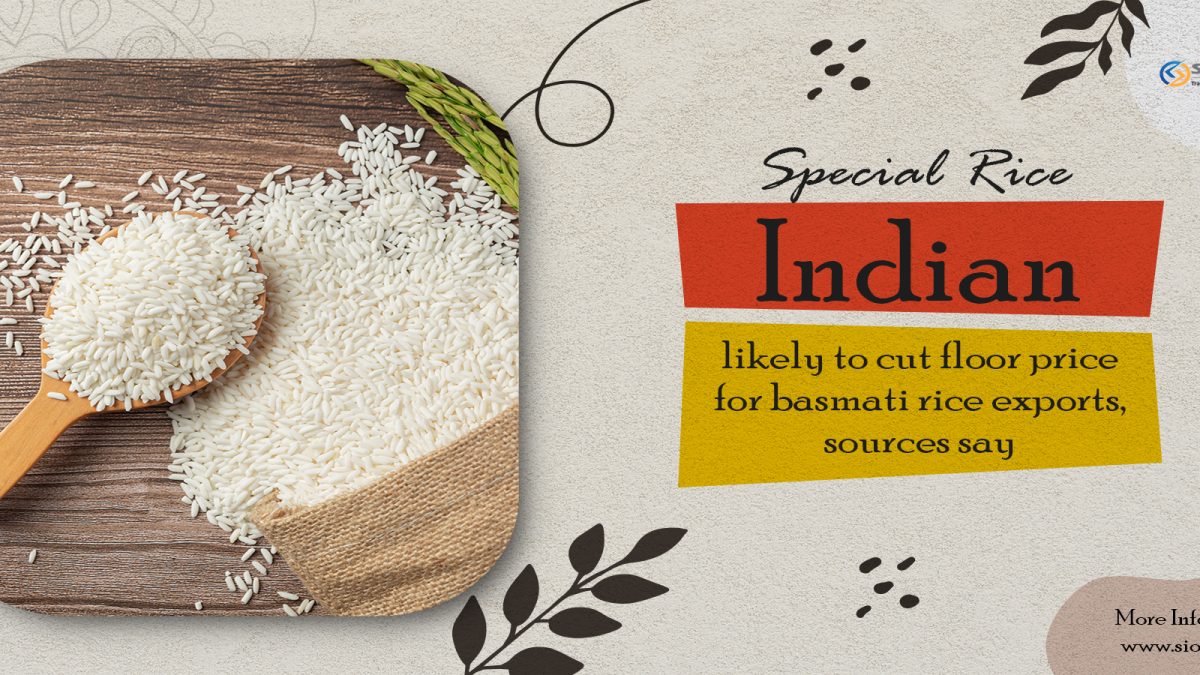
India likely to cut floor price for basmati rice exports, sources say
The global import export data shows that there is a progress in the world of rice exports,
India is a country that is an important player in the world and is expected to make a good move by reducing the floor price for basmati rice exports.
As per the sources this decision is not yet confirmed by officials but it has been done because of the few concerns from both farmers and exporters, who think that the current price is not beneficial for them and gives out a negetive ipact.
The floor price,or minimum export price is expected to go from $1,200 per metric ton to $950 per metric ton.
In this blog post we wil look into the reasons behind the l changes and what it means for the basmati rice industry.
Understanding the Floor Price
The minimum export price for basmati rice also known as the floor price is a crucial import in the world of international trade.
It sets a minimum value that exporters must receive for their product. In this case the floor price is specially for basmati rice a highly sought after variety known for its different aroma and taste.
Reasons for the Price Reduction
The decision to lower the MEP for basmati rice exports has been driven by several factors:
1.For Exporter & Farmer: One of the first and important things behind lowering the price is because of dissatisfaction among both basmati rice farmers and exporters.
The current floor price of $1,200 per metric ton was considered by many as too high, making it challenging to compete in the global market.
Because of this farmers found it hard to sell their produce at the set price.
2.Competing in the International Market: India is one of the world’s largest producers of basmati rice and it faces tough competition from countries like Pakistan and Thailand.
These nations offer their basmati rice at more competitive rates making it important for India to stay competitive and maintain its position in the global market.
3. Ensuring the Viability : A reduced floor price is done in order to ensure the viability of the basmati rice industry. By making it more accessible to both domestic and international buyers.
The data shows that India is a agricultural country. It wants to increase demand and encourage farmers to continue cultivating this valuable crop.
Implications of the Price Reduction
A potential reduction in the floor price for basmati rice exports could have several implications:
1. Boost in Exports: A lower minimum export price will increase the basmati rice exports.
The import export data shows that more competitive pricing can help India to enter into larger markets & higher quantities.
2. Increased Revenue for Farmers: The lower floor price can make it easier for farmers to sell their basmati rice which will leadto higher revenues and income that can also benefit many communities .
3. Enhanced Competitiveness: By aligning prices more closely with international market rates, India can improve its competitiveness in the global basmati rice market.
4. Economic Growth: A basmati rice industry can help you to increase \ economic growth both in terms of domestic production and foreign exchange earnings.
Conclusion
India’s decision to reduce the floor price for basmati rice exports signifies a shift in strategy aimed for concerns from farmers and exporters
If you want to know more about such information then you should visit siomex .
